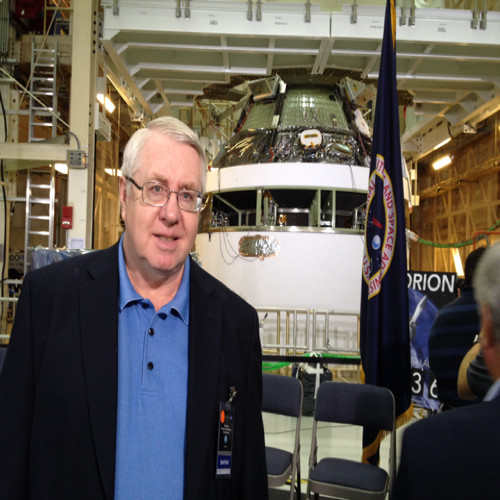Sea Recons Readied: NRO to bolster space-based ocean surveillance to track suspicious ships

Copyright 2003 Aviation Week and Space Technology. This article appears in the 1 December 2003 issue and is reprinted here by permission of the author.
A National Reconnaissance Office
secret space mission, important
for tracking potential
terrorist movements involving
ships, is poised for liftoff this
week from Vandenberg AFB, Calif.
The 13,700-lb. payload of 2-3 ocean
surveillance spacecraft is to be launched
as early as about 2 a.m. PST Dec. 2 on
board a U.S. Air Force/Lockheed Martin
Atlas-Centaur. The overall booster
and payload combined are valued at
roughly $500-600 million.
This will be only the second military
mission to use the 196-ft. Atlas IIAS/Centaur
from Vandenberg. The first was a
related secret mission in 2001 that Vandenberg mission this week is bringing
to light more detail on space-based
ocean surveillance, one of the more secret
U.S. space intelligence operations.
Both the difficulty and importance of
NRO’s space ocean surveillance role, in
connection with the Navy and Coast
Guard, has been elevated since the
Sept. 11, 2001, terrorist attacks.
The need to track thousands of civilian
ships worldwide has intensified given
the potential for seemingly harmless
shipping to be involved in nuclear, chemical
or biological terrorist operations. It
was easier to track Soviet warships than
a far larger number of civilian ships with
unknown cargos and crew.
There are about 14 operational NRO
ocean surveillance spacecraft, according to respected military space analyst Ted
Molczan. Since the late1980s they have
been launched in groups of three that fly
in triangular formations. Each satellite
in a group is separated by about 30 mi.
Each formation returns data on the location
and direction of ships within view
of its elint and interfrometry sensors. A
global real-time computer database on
all ship movements is updated as data
from each group of satellites are continually
merged with data from other similar
formations as well as Navy and Coast
Guard air and sea surveillance.
Since the late 1980s, each three-satellite
constellation has been launched together.
Through the 1990s, heavy Titan
IV boosters were used to launch each
group. The NRO then made a major
shift to the Atlas-Centaur, building a
large new pad facility at Vandenberg for
the project.
The Atlas-Centaur is a highly specialized
launcher because of its liquid
hydrogen-fueled Centaur upper stage
powered by Pratt & Whitney RL10 engines.
Until the new Vandenberg installation,
such launchers had only been
flown from the Cape and rarely used for
low- and medium-altitude orbits most
often employed by NRO.
Although inaugurated in 1999 with
NASA’s launch of the Terra environmental
satellite, the new Vandenberg facility
was built more specifically for the
reconnaissance office.
The first, and so far only, Vandenberg
NRO Atlas-Centaur mission was
launched in September 2001 carrying
just two ocean surveillance payloads.
That was unusual since ocean surveillance
formations normally involve
three spacecraft. After launch, word began
to circulate in intelligence circles
about a significant problem with the mission,
possibly involving failure of a third
satellite to separate from the launcher.
Operational details are classified so it
remains to be seen whether the flight
scheduled for this week will deploy two
or three spacecraft. Whatever the number,
they will be placed into about a 685
X-750-mi. orbit inclined 63.4 deg. The Centaur is to do this using a two-burn
profile following separation from the Atlas,
augmented with four solid motors.
In a mission that will be visible to the
Los Angeles region, conditions permitting,
the Atlas will fly a southern trajectory
just off the California coast. The
Centaur will fire initially for 10 min. 44
sec. to, first, inject the NRO payload into
an 155 X-620-mi. elliptical parking orbit.
The Centaur/NRO payload stack will
fly south until the southern extreme of
the orbit—over southern South America.
The ground track will then curve
northeast up the Indian Ocean off Madagascar
before the Centaur is ignited for
its second burn lasting only 11 sec.
Depending upon when in its secret launch window the vehicle is fired, the overall ground tracks can vary between
what are designated “early, optimal or
late” trajectories. This will govern
whether the spacecraft are released over
the northern Indian Ocean or over the
border between India and Pakistan. The
mission, designated Medium-Launch
Vehicle MLV-14, is being managed overall
by International Launch Services.
The spacecraft will continue to circle
Earth between 63.4 deg. N. and S. Lat.,
an orbit that provides extensive surveillance
of all the oceans while also enabling
best overall management of the
multiple ocean surveillance constellations.
Although deployed close together
the satellites, whether two or three,
will use their on-board propulsion to
move away from each other to form the
desired surveillance spread. This will
take about a month of operations and
checkout.








